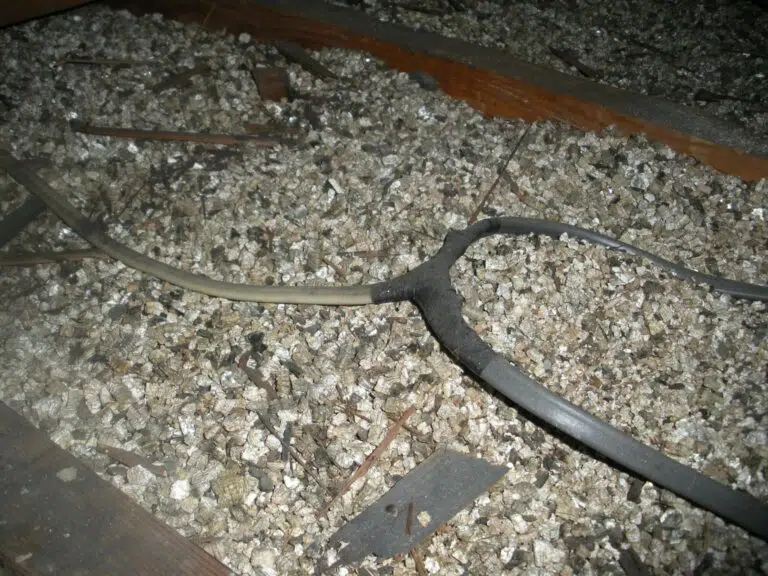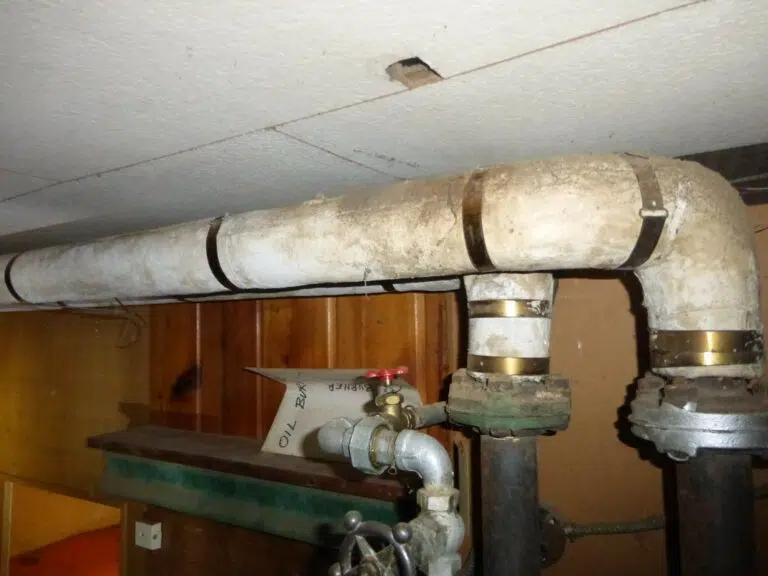Homebuyers have a lot of questions about indoor air quality and for good reason; most Americans spend at least 1/3 of their time every day inside their house and if breathing the air could make you sick, that is a big deal.
Unfortunately, many indoor air quality problems are difficult to inspect for or gauge accurately because they lack easily definable metrics; this leaves uncertainty regarding things like mold, formaldehyde, pets, rodents, and other peculiar odors. One indoor air quality question that comes up a lot on older homes, which is a bit more precise to measure, is asbestos. This blog will provide you with need-to-know basics about asbestos and prepare you to respond to buyer concerns.
What is asbestos?
Asbestos is a mineral that is mined from the earth. It has natural properties that make it an excellent and inexpensive fire retardant; as such it was added to many building products to make them perform better with peak use between the 1940’s through the 1970’s. Common building materials that contain asbestos include but are not limited to:
- Vermiculite insulation
- 9”x 9” floor tiles
- Acoustic ceiling tiles
- White tape on heating ducts
- Insulation on boiler pipes and boilers
- Old asbestos cement siding
- Popcorn ceiling texture
- Glues used under flooring
Why is asbestos Bad?
Asbestos is bad for human health when the tiny abrasive fibers are inhaled into the lungs where they can damage the lung tissue. This seems to be exacerbated by cigarette smoking and the resulting diseases are mesothelioma and lung cancer. No good.
Is asbestos identification included in a home inspection?
No. You can get a certification for asbestos inspections, but most home inspectors do not do this work and if they did they would charge an additional inspection fee as an add-on service. Your home inspection report may note the presence of building materials which are likely to contain asbestos, such as those old 9×9 floor tiles, or white tape on ducts, but this is beyond the scope of a home inspection and just a courtesy by the home inspector to point out the presence of materials which often do contain asbestos. This should not be confused with a complete asbestos identification inspection which is much more comprehensive.
A complete asbestos evaluation often involves destructive testing where samples are drilled, scraped or pried from the building. You would need permission from a home owner if you were doing this prior to purchasing a house and such permission may not be granted. Remind your client that Home Inspectors are not allowed to damage the buildings they are inspecting, so there is generally no practical way to inspect for asbestos containing materials in a comprehensive way as a part of a pre-purchase home inspection; this is another reason why asbestos evaluation is often not done as a part of pre-purchase due diligence.
If my client wants an asbestos evaluation, what should I say?
You can recommend the buyer hire an industrial hygienist or an environmental lab to perform an evaluation of the house. These contractors should follow a thorough testing protocol and will often take more than a dozen samples from the building. Once they have the results the buyer should know what materials contain asbestos and most labs will also provide a protocol for remediating (safely removing) these materials. You now have data.
Should my client test for asbestos before buying?
I find that most home buyers do not test for asbestos as part of their due diligence when buying a house and here is why.
- If they are buying a house older than 1980, you can assume it probably contains are least some asbestos.
- If they are not planning a renovation, risks of exposure are generally low, though there are a few exceptions.
- Most home sellers will not allow their home to be damaged by destructive testing as part of pre-sale due diligence.
If your clients are planning a renovation, inform them they need to have a budget for lead and asbestos identification and remediation. If there is time to do this evaluation before buying the house, and the seller allows for it, that is great. The more data up front, the better. In hot markets home buyers often have very limited time to complete their inspections and I think many home buyers proceed with the logical assumption that the building contains asbestos and they will need to tackle it prior to renovation.
Recommended advice to home buyers about asbestos
As a home inspector, you can help your clients by teaching them a few basic concepts about asbestos containing materials in houses.
If a home buyer is moving into an older home, and not planning any renovation work, and the building materials in the house are in generally sound condition, then the asbestos fibers will not be able to “aerosolize,” or become airborne particulate. The asbestos will be, “encapsulated,” and will not pose a health hazard. For this reason, most old houses do not pose an asbestos-related health hazard to the occupants if you just move in and live there because the asbestos fibers are not likely to become airborne particulate.
The biggest risk posed by asbestos in buildings is during a remodel or renovation to an old house. This is when the asbestos-containing materials get damaged and aerosolized and people working or living in the house are at risk of exposure.
Laws regarding asbestos will vary by state but many states will require:
- Homeowners to test for asbestos prior to any construction or renovation project.
- Contractors to obtain a written asbestos report from a building owner prior to work.
- Asbestos remediation to be done by licensed abatement contractors prior to starting demolition work.
I am not aware of any requirements in my state for home owners to test for asbestos prior to selling their home. There could be a different protocol in other states; if so I would be interested to hear about it.
Are some asbestos-containing building materials more hazardous than others?
Yes. Some old building materials do not encapsulate the asbestos fibers as well as others. One such material is vermiculite insulation. This loose insulation, often in your attic, looks like small rocks or bits of mica. Much of this insulation came from a mine in Libby Montana and the vermiculite was contaminated with asbestos. This material can aerosolize easily, exposing workers or occupants, and tests to verify the presence of asbestos in vermiculite have proven unreliable. It’s best to assume this product contains asbestos and proceed with caution; I would have this remediated by a professional to reduce risks of exposure.
I hope this brief article about asbestos is helpful. There is always more that can be learned about this topic but this should give you a solid starting place. Remember, happy home buyers are informed home buyers.
________________________________________________________________
Dylan Chalk is the owner of Seattle-based Orca Inspection Services LLC – www.orcainspect.com. He is the founder of ScribeWare inspection report software offering innovative and simple report-writing solutions – www.getscribeware.com. He is also the author of The Confident House Hunter – a book to teach home buyers how to look at and understand houses: Cedar Fort Press Due out August 2016 – www.dylanchalk.com







